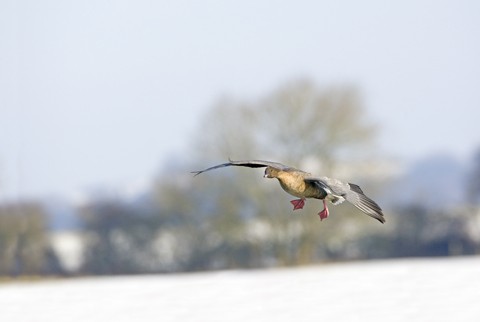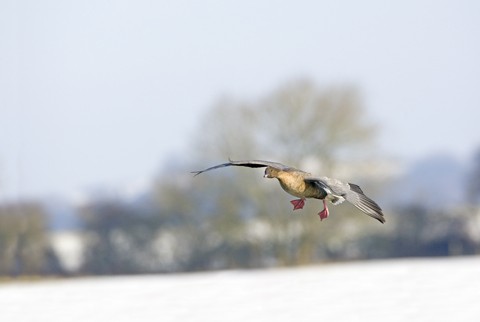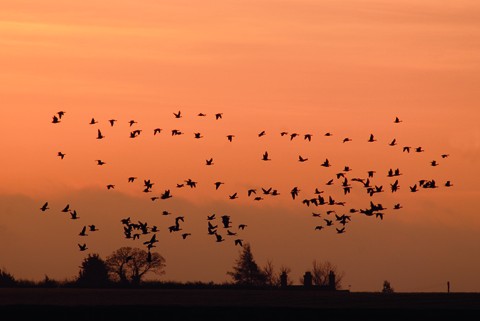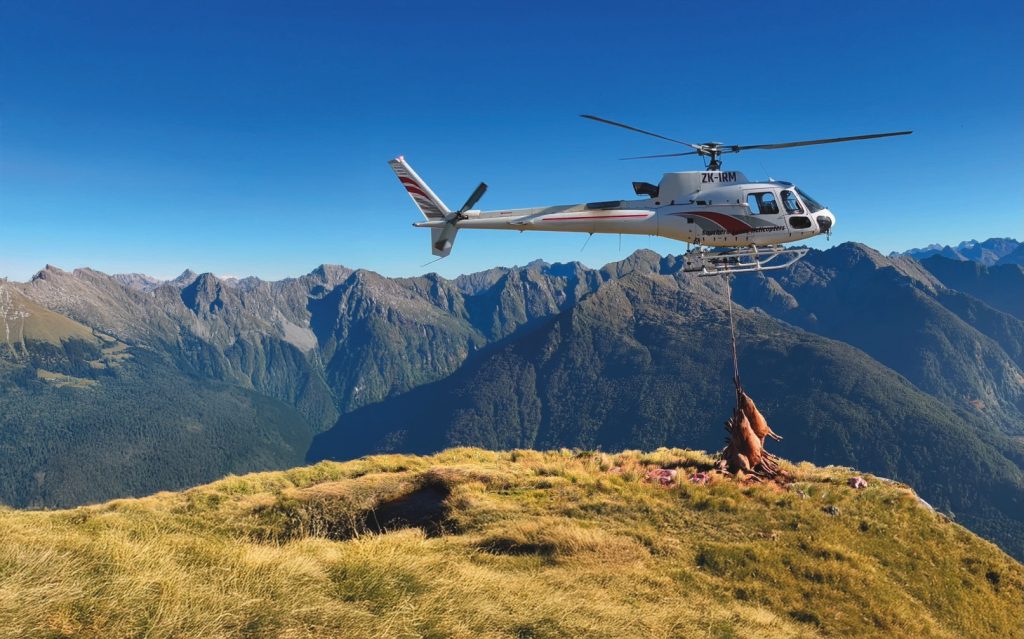Win CENS ProFlex DX5 earplugs worth £1,149 – enter here
Pink-footed geese shooting in the morning
Pink-footed geese: A fantastic morning on pink-footed geese was an unforgettable experience.

I had been lying in the bottom of a hedge for so long that it was starting to feel comfortable. Sunlight was still far away; in fact, it seemed so far away that I had given up looking forward to it. Somewhere in the distance, the first crow of the day screamed unpleasantly in the gloom. Turning my head from the ground, I noticed that the darkness was beginning to fray in the south-east, letting threads of pink and orange light seep through into the morning. From where I lay, I could see through a patch of long dead nettles and out into the shapeless blue sky.
Thirty yards away, a vague white glow indicated where the nearest decoy stood. Having pooled my resources with a number of friends, we had gathered together decoys in a variety of different formats. We had silhouettes and inflatables, windsocks and imperious full-bodied hulks that looked the part but which were wholly impractical on a dark morning, and it was finally my turn to see them in action.
An hour after setting them out, the decoys were beginning to show up through the darkness. The stars loomed heavily above, sparkling with a humbling abundance. Behind where I lay, a deep ditch drained the silage field where the decoys stood. The ditch had overflowed with melting ice and snow a few days before and left a splash in the field. I listened as a cock teal slashed past overhead and landed bleeping in the crispy water 20 yards away. After a moment, two others joined him, and they busied around in the fringes.
Let there be light
I was waiting for pinkfeet. Lying beneath what had been a tall blackthorn tree in summer, I felt cramped and numb. I looked up occasionally at the blasted limbs of the tree above me, moving my head to make the stars twinkle behind the skeletal twigs. With every passing second, the heavy weight of darkness was lifting.
At the very limit of my vision, a smear materialised. Then it moved. Over the next few minutes, the smear became familiar. The fox trotted back and forth through the frost, pushing the teal into the air, as well as an officious little woodcock that had slipped in unnoticed to the fringes of the splash. Even though I couldn’t see it clearly, the fox was readily identifiable. The crisp, bouncing gait gave him away, and he stopped every few seconds to smell the wind and peer down my hedgerow. The stars were shrinking in the east and with a final pause, he melted into the background. A few moments later he was replaced by a silent party of lapwings. They arrived without warning, skimming down over the turf, holding their wings in the air and coming to a gentle standstill.

At least with the light, the day was starting to become interesting. I have shot geese many times, but always down on the foreshore where there is so much to see and hear. The idea of shooting pink-footed geese inland always seemed like it would pale by comparison to the coast, where you are forced to tackle the monstrous ranks with your feet in the shell studded mud. I had been forced to reconsider when an extended period of snow made leaving the house impossible. Friends near the coast rang me nightly with reports of success amongst the mud, knowing that I was snowbound in the hills just 20 miles away. When the cold weather ban on shooting wildfowl and waders came in, I was glad for no other reason than the petulant thought that if I couldn’t shoot, then nobody should be able to.
The first murmur of pink-footed geese
Over the next few weeks, the silage fields around my house had lain under a blanket of snow as impenetrable as concrete. Here and there, the occasional half thaw allowed patches of grass to show through, and pink-footed geese grazed them flat within moments. The birds appeared to be struggling, and their numbers were building higher and higher, supplemented on the Solway by incomers from the west coast and isles.
When the weather finally broke and the ban was lifted, pink-footed geese had fallen from the sky like volcanic ash. Thousands of them smothered the fields, and the farms around my home were being trampled into mud. With such a perfect opportunity sitting (quite literally) on my doorstep, I could hardly ignore it. Two days later, as the cracks of light widened in the darkness, I heard the first murmur of pink-footed geese from my vantage point beneath the hedge. Nothing carries like the sound of pinks on the wing. Unlike the manic yell of greylags or the weary honk of Canadas, the singing chorus comes and goes like a ripple of seawater. In a swirling wind, the high notes will wander for miles. Somewhere down at the opening of the River Nith, beneath the solitary mass of Criffel, pink-footed geese were moving inland for the day, and my amateur calculations had put their flight path more or less directly over where I was now lying. A robin landed in the hedge above me and blinked smugly.
A hideous pump-action
As the wind twisted and turned, the chiming mumble of pink-footed geese vanished, then returned. At first it was so vague and distant that I wondered whether it was wishful thinking, but as the seconds ticked by and the sound grew, I felt my guts begin to twist with excitement. Lying by my side was a hideous, cumbersome pump-action 12-bore with a three-inch chamber. Best described as the shooting equivalent of a Vauxhall Nova, I had developed an unusual relationship with the gun because it just never missed. The more I hated it, the better it shot. I reached for it as the noise expanded until individual birds became distinct from the whole.
They were flying at an angle, pouring up from the sand banks. It would have taken them 20 minutes on the wing to reach my decoys, and as they appeared above the horizon, I had to catch my breath. Rather than form a single tidy skein, the pinks had assumed the ‘big wing’ formation. Dozens of skeins stacked vertically upon each other and stretching almost half a mile across formed an indistinct black haze of pumping flesh and feathers against the pink sky.

The formation began to change direction with the same ponderous certainty as an oil tanker, as if the tangent had been decided well in advance. The great bulk of birds began to swing westward, directly towards me. I gripped the stock of the pump action and watched as the smoky mass of birds began to resolve into definite specks. The clamour built and grew but they were agonisingly far away. Their turn hadn’t finished and they began to veer south at tremendous height. The morning was going to slip away as I watched the deafening torrent of birds run like water over the landscape. The robin returned and I almost batted him away in frustration until I noticed a party of distant silhouettes break off from the swinging whole and begin to lose altitude. They had spotted the decoys, and while it felt like heartbreak to watch the regimented thousands swing away, I realised that I was going to have to “make do” with a group of one hundred pink-footed geese.
The next 20 seconds felt like fourteen years. Knowing that I couldn’t look directly up at the incoming birds without the risk of their seeing my face, I stared fixedly at the cracked tip of a bramble thorn as the ringing cackle echoed and rolled around the field like summer thunder. One of the birds had a particularly shrill “wink”, and the others sounded like they were laughing at it. At the last minute, I made the decision to blow my cover and rolled over.
Pulling the trigger
Rising to one knee, the morning seemed suddenly very bright. I had a vision of back-pedalling shapes against the rising sun. Just 20 yards away, they had put their paddles down and were stretching their necks out horizontally. They had slowed down to land amongst the decoys, but that didn’t make it any easier as they began to flare at my movement. A bird shuddered at my first shot, then folded with the second. Stunned by the excitement, I left my third shot unfired and watched as the pink-footed geese battled to distance themselves from the ambush. They had fallen silent, and the only sound was the whistling crackle of wingbeats. Out in the frost, a dark shape lay amongst the decoys.
To many, a bag of one goose is scarcely worth making a fuss about. As the seasons revolved and summer came along, I was surprised that my dearest memory of last winter was that single bird on a morning flight in the silage fields behind my house. There are so many different ways to shoot pink-footed geese and my first attempt at inland shooting had opened a new world to me. The lonely isolation that I had imagined was unique to the foreshore had transplanted perfectly to the silent icy fields beneath the Southern Uplands. It made me realise that it’s less about where you shoot, but what you shoot.
Pink-footed geese are not a quarry species for the faint hearted, but once you are hooked on those magical birds, a morning spent lying in the frost is a small price to pay.
For more shoot features click here
Related Articles
Get the latest news delivered direct to your door
Subscribe to Shooting Times & Country
Discover the ultimate companion for field sports enthusiasts with Shooting Times & Country Magazine, the UK’s leading weekly publication that has been at the forefront of shooting culture since 1882. Subscribers gain access to expert tips, comprehensive gear reviews, seasonal advice and a vibrant community of like-minded shooters.
Save on shop price when you subscribe with weekly issues featuring in-depth articles on gundog training, exclusive member offers and access to the digital back issue library. A Shooting Times & Country subscription is more than a magazine, don’t just read about the countryside; immerse yourself in its most authoritative and engaging publication.







